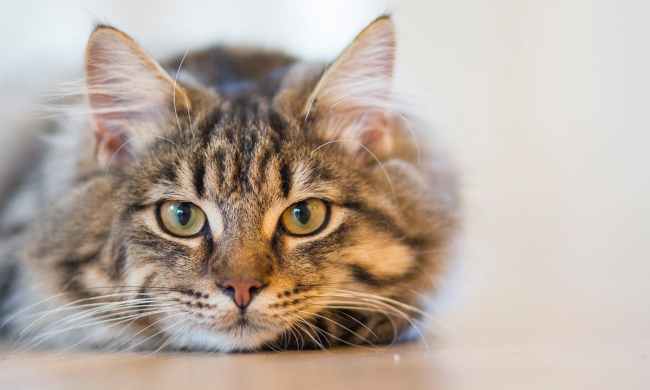The sudden arrival of pumpkin-flavored drinks and snacks can only mean one thing — spooky season is here and the perfect time to start planning your family’s Halloween festivities. But what about Fido and Fluffy? Don’t worry: We’re here to share a few of the best ways to spend Halloween with pets. From finding the perfect costume for your fur baby to baking your own dog treats, we’ve got ideas that will make celebrating All Hallows’ Eve fun (and, most importantly, safe) for the entire family.
How to keep your pets safe during Halloween?

There are a few things you need to think about when planning a pet-friendly Halloween.
Candy
You already know about chocolate, but other ingredients in candy might pose a threat as well. This includes xylitol, a sugar alternative that hurts dogs even in very small quantities. Some healthy festive snacks might go into the no pile as well, like grapes. But remember that pumpkin is great for pets in moderation. So if you want a fall treat for your buddy, stick to plain jack-o’-lantern.
Decorations
We’ve written extensively about the dangers of Christmas trees and other accoutrements, so it won’t surprise you to learn that some Halloween decor can have the same issues. Ornaments, lights, and tinsel all can do damage to pets if digested or broken, especially cats or dogs who love to chew.
Noise
While this certainly won’t end with your pooch or mouser in the emergency vet, you do want to keep things calm enough that your animals don’t freak out every October 31. Some dogs might prefer to spend the evening in a crate, and some cats may prefer to hide in their favorite room. Others will love the thick of things and greet every eager kid. Knowing your pet’s personality helps.
Wear matching costumes
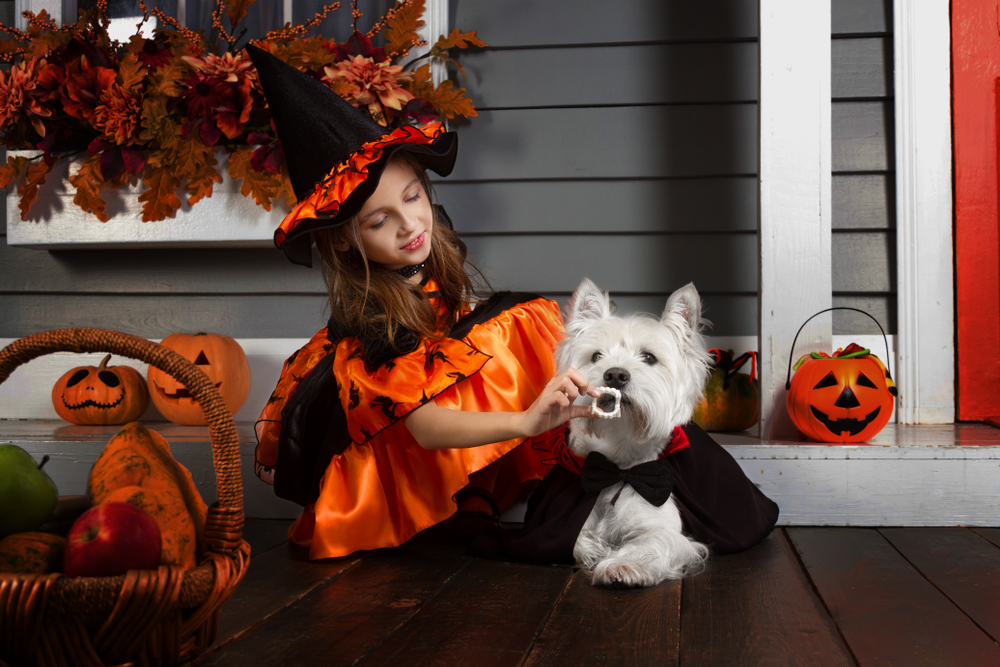
Nothing says, “I’m a devoted pet parent” quite like choosing Halloween costumes you can wear together. Whether you want to dress up like your beastie or choose costumes that pair well together (think Dorothy and Toto or Fred Flintstone and Dino), matching costumes are a festive way to set the tone for the evening. Avoid costumes that may frighten your pet, such as masks, large wings, or horns. When selecting a costume for your pet, choose nonflammable materials, make sure the costume is free of choking hazards, and keep an eye on your pet while he’s in costume to ensure he stays safe.
Try out fun Halloween accessories
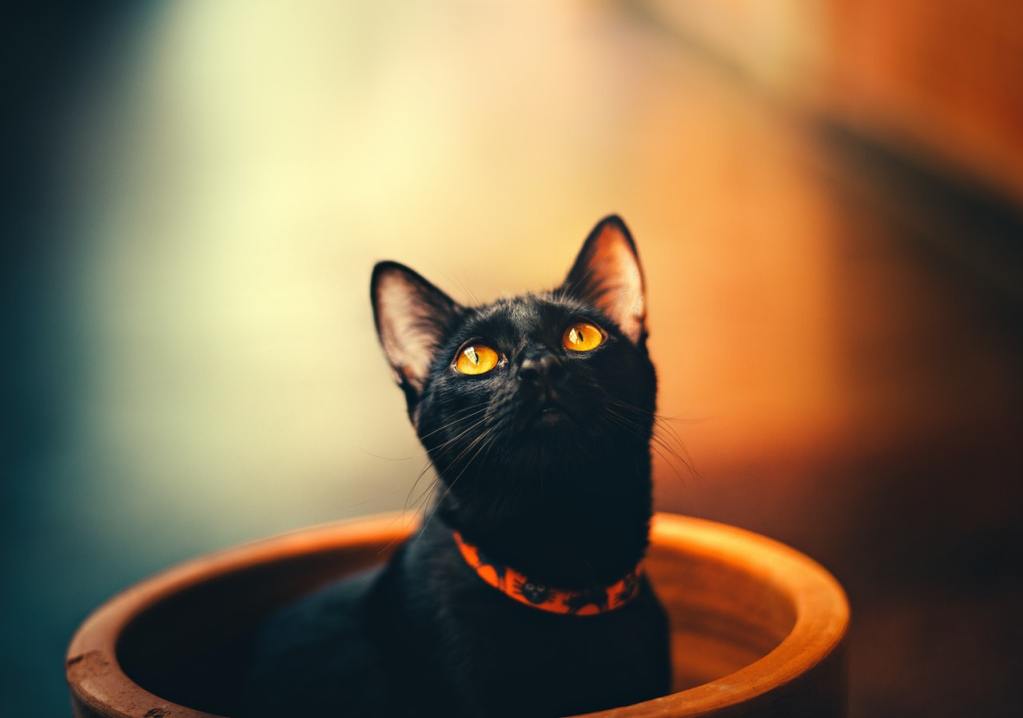
While it’s important to give your pet time to adjust to wearing a costume, some pets hate them with a fiery passion. If that sounds like your furry friend, opt for a Halloween-themed collar instead. This dog collar features an adorable black bat, and it’s guaranteed to look perfect on your pup — whether or not you want to dress up like a vampire this year. For cats, we love this neck collar cat costume, which acts as a minimalist costume even finicky cats should be able to tolerate wearing.
Make your own Halloween treats for your pet
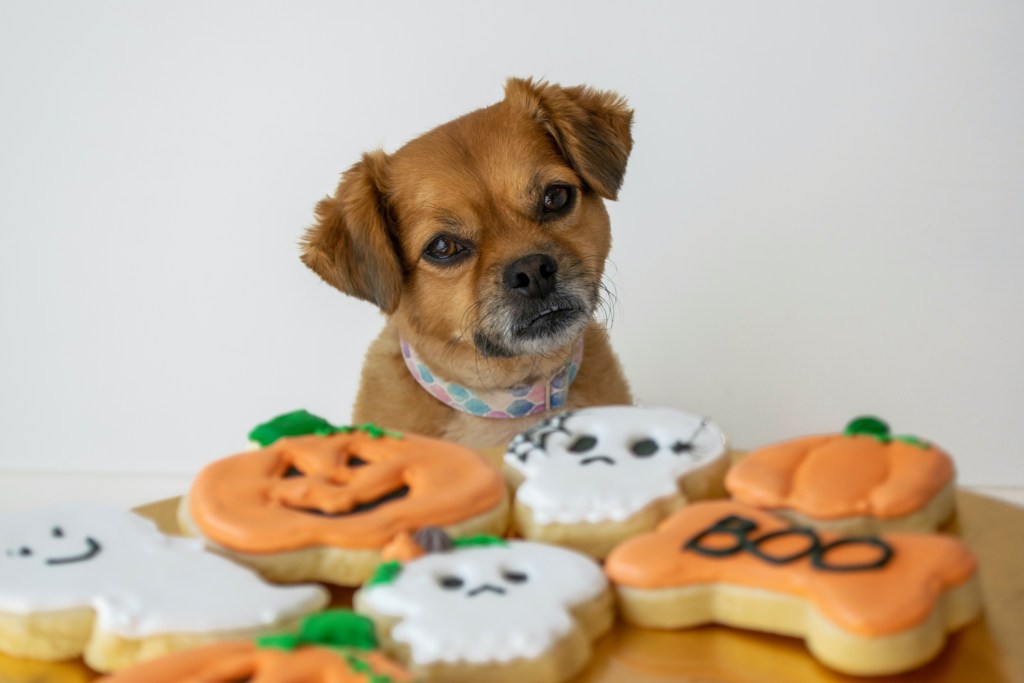
One of the most enjoyable parts of Halloween is indulging in candy. While it makes us feel like a kid again, cats and dogs are left sitting on the sidelines. Fortunately, there are quick, easy recipes for homemade treats your pet will love. (And unlike chocolate, these won’t make your pet sick.) One recipe is so simple it calls for only two ingredients: whole wheat flour and baby food. Use Halloween-themed cookie cutters, bake for 20 to 25 minutes until these munchies crisp up, and your pooch can trick-or-treat from the comfort of home.
If you have cats, try a mixture of salmon, egg, and flour baked for around 20 minutes. (First, make sure your cat isn’t allergic to flour. If so, a few bites of fish make a tasty plan B.)
Take your dog trick-or-treating
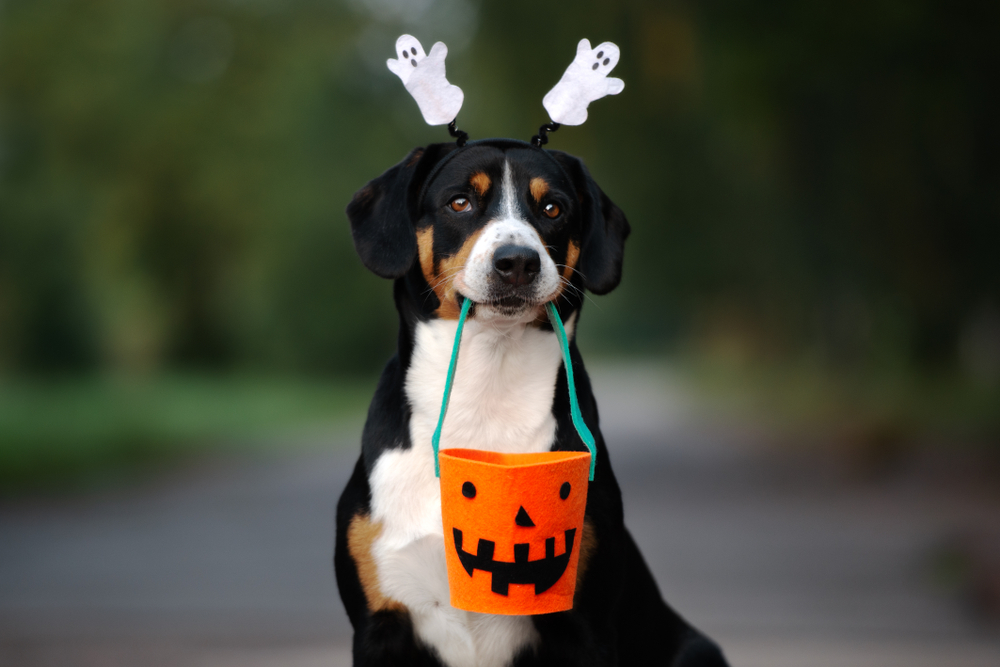
It seems unfair that human children can go from house to house collecting candy, while our fur babies are excluded. As it turns out, plenty of pet parents feel the same way. These days, numerous pet stores, neighborhood clubhouses, dog parks, and cities have dog trick-or-treat events. You can find them by searching online (Bring Fido is a fantastic option), contacting your local pet center, or taking a peek at your neighborhood bulletin board.
Some houses even give out treats for pets. You never know when you’ll find the best-kept secret for doggie trick-or-treating just around the corner — or right across the street.
Treat them to a new Halloween-themed toy
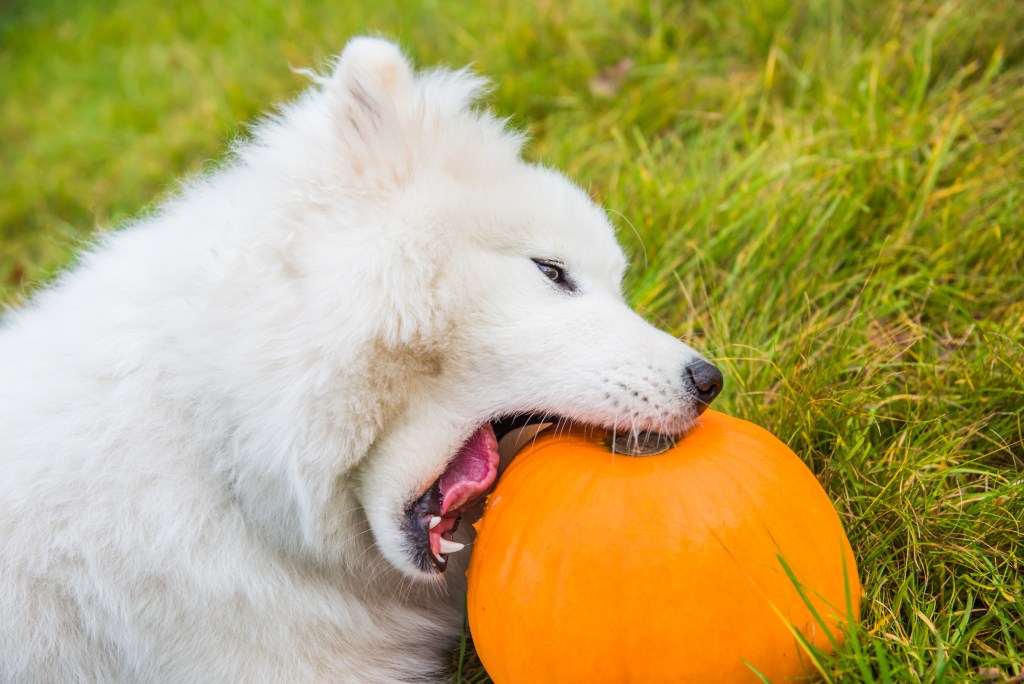
Your animal companion doesn’t have to be left out of the Halloween festivities if going out trick-or-treating with your pet sounds more frightening than fun. You can find adorable Halloween-themed toys in most pet stores, big-box stores, and online. Your cat will get in the spirit of things chasing these cute ghost toys filled with catnip, and your dog will sound positively frightening while gnawing on a squeaky bone.
Have a family night at home
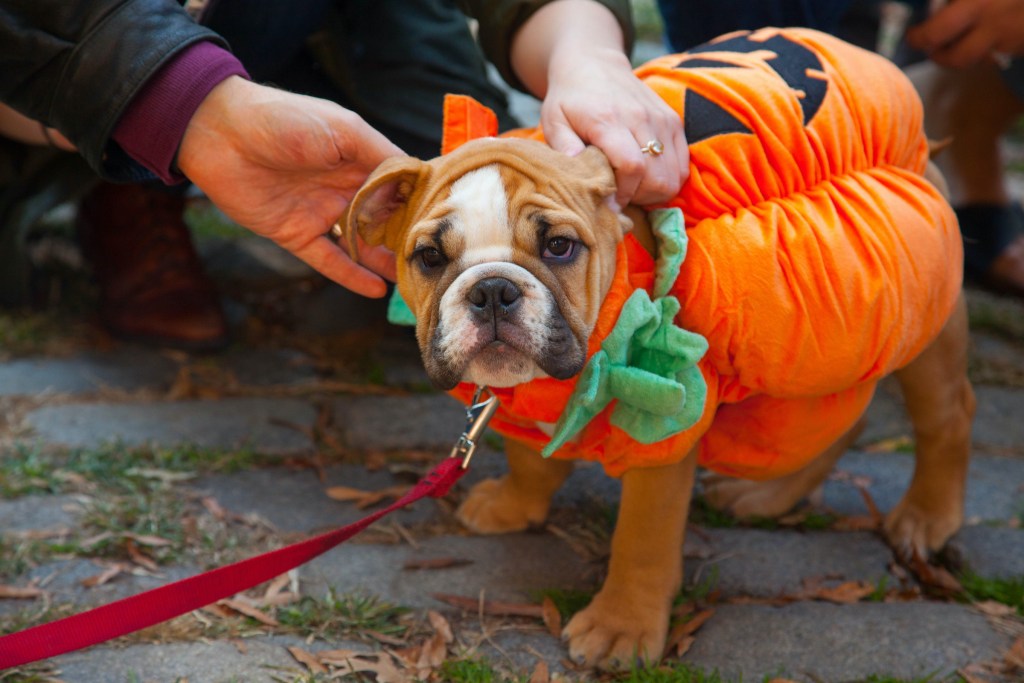
Not all pets love Halloween. In fact, research shows that many dogs find it a stressful time of year. The doorbells, the knocking, the screaming kids, the costumes.… It can be a lot for a fur baby. If your pet is easily frightened, consider leaving a candy dish outside with a sign asking children not to ring the doorbell or knock. Take your pet to a room that’s as far from your front door as possible, play music, watch a movie or two, and spend the evening cuddling your furry friend instead.
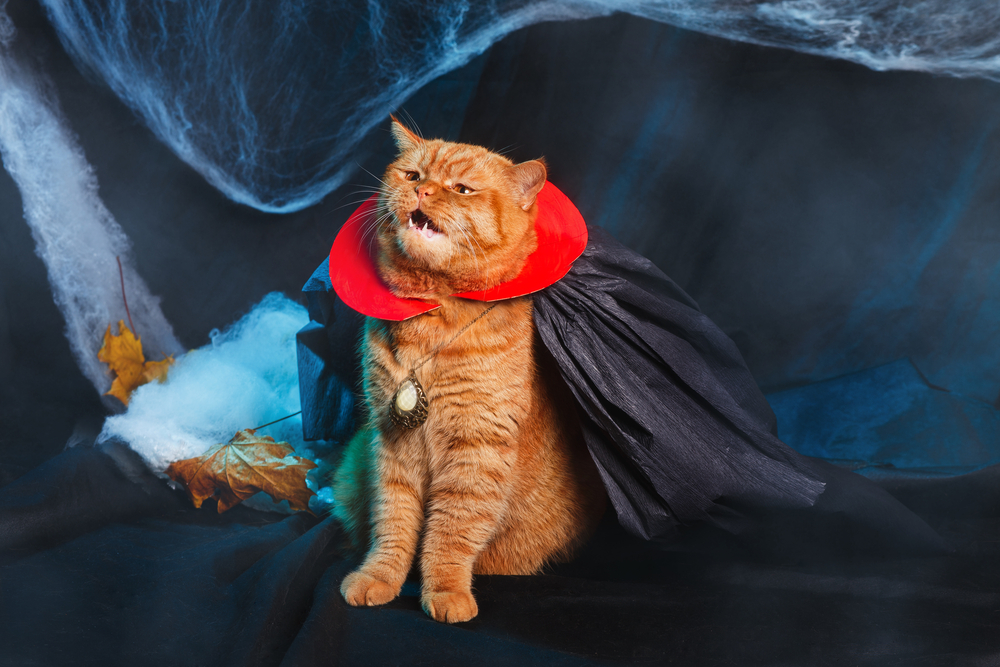
Halloween: It’s one of our favorite holidays. If Halloween had an official motto, it would be “Come as you aren’t.” Whether you plan to take your pup trick-or-treating, bake monster munchies at home, or host a party wearing matching costumes, Halloween is a blast for almost everyone. Take precautions with your pets if they’re prone to anxiety, choose your outfits carefully, and you’ll have a spectacular season with your fur baby.




